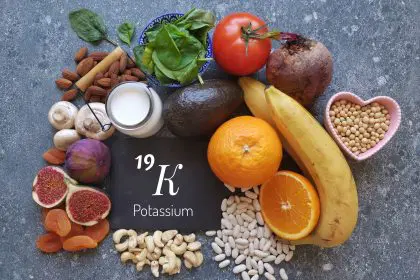Your body could be aging faster or slower than your birth certificate suggests—here’s how to find out and fix it
Your chronological age might be 40, but your body could be functioning like it’s 30—or 50. This difference, known as your metabolic age, offers powerful insights into your overall health that your birthday simply can’t provide. For celebrities and everyday folks alike, understanding this concept has become a game-changer in the quest for longevity and vitality.
“I thought I was doing everything right, but my metabolic age test showed I was functioning 12 years older than my actual age,” shares a 38-year-old fitness enthusiast from Denver. “That wake-up call completely changed my approach to health.”
What metabolic age really tells you about your body
Unlike your chronological age that simply marks time since birth, metabolic age measures how efficiently your body processes energy compared to others your age. It’s calculated using your basal metabolic rate (BMR)—the calories your body burns while performing essential functions like breathing and circulating blood, even when completely at rest.
This measurement provides a window into your cellular health, hormonal balance, and overall biological efficiency. When your metabolic age is lower than your actual age, it suggests your body is functioning more efficiently than average. However, a higher metabolic age indicates your metabolism is working less efficiently than it should be.
The concept has gained popularity among health enthusiasts because it offers a more nuanced perspective on wellness than weight or BMI alone. Someone with a healthy weight might still have a high metabolic age due to factors like muscle mass, stress levels, and sleep quality.
The science behind determining your true body age
The foundation of metabolic age is the BMR calculation, which considers factors beyond just weight. For those assigned female at birth, the formula looks like this: (10 × weight in kg) + (6.25 × height in cm) – (5 × age in years) – 161. For those assigned male at birth: (10 × weight in kg) + (6.25 × height in cm) – (5 × age in years) + 5.
This number is then compared against average BMR values for people of your chronological age. If your BMR is higher than average, your metabolic age will be lower than your actual age, and vice versa.
More precise measurements come from specialized equipment like bioelectrical impedance analysis (BIA) devices or metabolic testing machines found in some medical offices and high-end fitness centers. These provide more accurate readings by measuring body composition and oxygen consumption.
What’s fascinating is how two people with identical chronological ages and similar body weights can have drastically different metabolic ages based on lifestyle factors and genetic predispositions.
Why your body composition matters more than your weight
When it comes to metabolic age, the scale doesn’t tell the full story. Your body composition—specifically the ratio of muscle to fat—plays a critical role in determining how efficiently your metabolism functions.
Muscle tissue requires more energy to maintain than fat, even when you’re resting. This means that individuals with more muscle mass typically have higher metabolic rates and potentially lower metabolic ages.
Fat distribution also matters significantly. Research shows that visceral fat—the kind that accumulates around your organs in your abdominal area—is particularly problematic for metabolic health. Even relatively thin people with higher amounts of visceral fat might have older metabolic ages than someone with more weight but better distribution.
This explains why some Hollywood stars maintain their youthful energy and appearance despite advancing years—many focus on building lean muscle rather than simply restricting calories.
7 proven strategies to lower your metabolic age
If your metabolic age exceeds your chronological age, don’t despair. These science-backed approaches can help reverse the trend:
- Strength training revolution Building muscle is perhaps the most effective way to boost metabolism. Unlike cardio exercise alone, resistance training creates lasting metabolic benefits as your body uses energy to repair and maintain muscle tissue. Research suggests that adding just three 30-minute strength sessions weekly can reduce metabolic age by up to five years over six months. Celebrities often credit strength training for maintaining their youthful energy levels. The focus has shifted from endless cardio to smart strength work, with many A-listers incorporating weighted movements into their fitness routines.
- High-intensity interval training (HIIT) These workouts alternate between intense bursts of activity and fixed periods of less-intense activity or rest. A study published in Cell Metabolism found that HIIT can reverse age-related deterioration in mitochondrial function—essentially rejuvenating cells at the molecular level. The beauty of HIIT lies in its efficiency—you can experience significant metabolic benefits in sessions as short as 20 minutes. This makes it popular among time-pressed celebrities and professionals alike.
- Protein-forward eating patterns Protein requires more energy to digest than carbohydrates or fats, creating a thermogenic effect that temporarily boosts metabolism. It also provides the building blocks needed for muscle repair and growth. Aim for 0.8-1 gram of protein per pound of target body weight daily, spread across meals. Focus on diverse sources including lean meats, fish, eggs, dairy, legumes, and plant proteins. Many celebrity nutritionists now recommend this approach rather than severe calorie restriction, which can actually damage metabolism over time.
- Strategic meal timing When you eat may be almost as important as what you eat. Studies show that aligning your eating window with your body’s natural circadian rhythm can improve metabolic efficiency. Time-restricted eating—limiting food intake to an 8-10 hour window—has shown promising results for metabolic health in research. This approach, often called “intermittent fasting,” gives your digestive system a chance to rest and repair. Some research suggests that eating your larger meals earlier in the day rather than late at night also supports healthier metabolism.
- Sleep quality revolution Poor sleep dramatically impacts hormones that regulate metabolism and hunger. Even one night of inadequate sleep can decrease insulin sensitivity and increase stress hormones like cortisol. Prioritize 7-9 hours of quality sleep in a cool, dark room. Establish a consistent sleep schedule and create a relaxing bedtime routine. Limit screen time before bed, as blue light disrupts melatonin production. Many celebrities now consider sleep as important as diet and exercise in their wellness routines, investing in sleep tracking technology and optimized sleep environments.
- Stress management mastery Chronic stress leads to persistently elevated cortisol levels, which can increase fat storage—particularly around the abdomen—and impair metabolism. Effective stress management techniques include meditation, deep breathing exercises, yoga, time in nature, creative pursuits, and maintaining strong social connections. Research shows that even brief daily meditation can reduce cortisol levels and improve metabolic markers. The wellness routines of many public figures now include dedicated time for stress reduction, recognizing its profound impact on biological aging.
- Hydration and nutrition quality Proper hydration supports every metabolic process in the body. Research in the Journal of Clinical Endocrinology & Metabolism found that drinking 500ml of water increased metabolic rate by 30% for up to 40 minutes. Beyond quantity, focus on nutritional quality. Antioxidant-rich foods combat oxidative stress that accelerates aging. Omega-3 fatty acids reduce inflammation. Fiber supports gut health, which increasingly appears connected to metabolic function. Many celebrities emphasize colorful, whole-food diets rather than processed alternatives, regardless of their specific dietary philosophy.
Tracking progress beyond the scale
Traditional metrics like weight or BMI provide limited insight into metabolic health. More meaningful measures include: Regular body composition assessments through methods like DEXA scans or bioelectrical impedance; Waist-to-hip ratio measurements; Resting heart rate and heart rate recovery time; Energy levels throughout the day; Sleep quality metrics; Blood markers like fasting glucose, HbA1c, and triglyceride levels and; Performance improvements in strength and endurance
Many health-conscious individuals now track these metrics using wearable technology or regular health assessments, creating a more comprehensive picture of their metabolic health.
When to consider professional guidance
While lifestyle modifications can significantly impact metabolic age, sometimes professional support is warranted—especially if you’re not seeing results or have underlying health concerns.
Health experts who can provide specialized guidance include registered dietitians who understand metabolic function, exercise physiologists who can design targeted workout programs, sleep specialists who address underlying sleep disorders, and healthcare providers who can check for hormonal imbalances or medical conditions affecting metabolism.
Many successful metabolic improvement journeys involve a team approach, combining expertise from various health disciplines.
The journey to improve metabolic age represents a shift away from quick fixes toward sustainable lifestyle changes that enhance overall wellbeing. By focusing on these science-backed strategies, you may not only reduce your metabolic age but also improve your quality of life and longevity prospects.
For those willing to make consistent changes, the rewards extend far beyond numbers on a chart—increased energy, improved mood, better cognitive function, and enhanced physical capabilities are all common benefits of a younger metabolic profile.
















